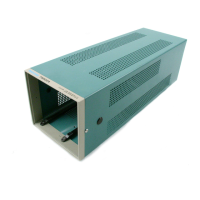•
•
•
•
•
•
•
•
•
•
•
•
•
•
•
•
•
•
•
•
•
•
•
•
•
•
•
•
•
•
•
•
Power Source
Power Usage/
Loading
Considerations
Line Voltage
Selection/Fuse
Replacement
TM 502A Instruction Manual
Operating Instructions
This section of the manual tells how to prepare the power module for use,
and install plug-in modules .
The TM 502A Power Module is calibrated and ready for use when received.
A list of standard accessories (and part numbers) is located in the back of
this manual.
The TM 502A Power Module is designed to operate from a power source
with its neutral at or near earth (ground) potential with a separate safety-
earth conductor. It is not intended to operate from two phases of a multi-
phase system .
With two plug-in modules installed, the TM 502A Power Module can require
up to 120 W of power at the upper limits of the high-line voltage ranges .
Actual power consumption depends on the particular module combination
and operating mode selected at any one time .
The power capability of the TM 502A Power Module can best be used by
carefully planning the plug-in configuration, the external loads, and the
resulting power distributions. The power module will work best if you do the
following:
1. Use equal loads in both compartments .
2. Dissipate as much power as possible in the external loads.
3. Operate the system in an ambient temperature near 25°C .
Each plug-in has access to a pair of heat-sinked, series-pass transistors-
one NPN and the other PNP. These transistors enable the plug-in to operate
in power ranges not possible if the power were to dissipate within the plug-
ins .
The line voltage selector is part of the line cord plug assembly, located in the
rear of the power module. Verify that the voltage shown in the selector
window is correct for the line voltage available.
If the displayed voltage selection is incorrect, or the fuse needs replace-
ment, perform the following procedure while referring to Figure 2-1 .
1. Ensure that the power switch on the rear of the module is turned off and
that the line cord is not plugged into the line voltage connector .
REV DEC 1993
2-1

